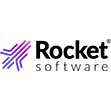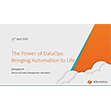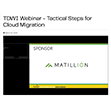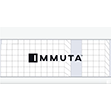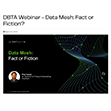
Inside Microsoft Fabric’s Push to Rethink How AI Sees Data

AI systems are getting better at working with data, but they still struggle to understand how things connect. They might be able to find patterns or make predictions, but they often miss the bigger picture, like how a sudden voltage drop in a power grid ripples through control systems or how a shipping delay cascades across a complex supply chain.
Even in scientific research, an AI model might detect correlations in lab data without understanding the underlying cause. That kind of reasoning depends on more than just data. It depends on how the data is structured and how well relationships are mapped.
At FabCon this week, Microsoft rolled out a set of updates to Fabric that shift it in a new direction. The most notable is a built-in graph engine. This is the same core tech that powers LinkedIn’s massive relationship maps. It is now adapted to help model how systems, data, and people are linked across a business.
Microsoft has also added new geospatial tools, so teams can work with location-based data more naturally. And they’ve made it easier to stream live data from external sources like Oracle and BigQuery without having to move everything first. It’s still Fabric at the core, but it’s starting to feel more like a foundation for building AI systems that actually understand how things relate, not just what they are.
“We’re in a hinge moment for AI,” wrote Jessica Hawk, Corporate Vice President, Data, AI, and Digital Applications at Microsoft in her blog post “The experiments are over and the real work has begun. Centralizing data, once the finish line, is now the starting point. The definition of ‘AI readiness’ is evolving as increasingly sophisticated agents demand rich, contextualized data grounded in business operations to deliver meaningful results.”
What Microsoft is doing with Fabric, especially the way it brings together graphs and vector search, changes how AI systems handle data. Most models today pull from huge data stores without much structure. That might be fine for something simple, like answering a question or summarizing a document. However, if an agent is trying to trace a shipping delay across multiple regions or figure out how a small failure spread through a larger system, it needs more than just access to raw data.
The graph helps by giving the system a clearer starting point. It can zero in on the pieces that actually matter, whether that means customers tied to a specific product, or machines connected in a sequence. Once that set is defined, vector search can work inside it to find patterns or meaning. Instead of running blind across everything, the model focuses on a smaller space with more context.
It’s a bit like walking into a room and already knowing which corner to check first. The answers come quicker, they’re usually better, and the system spends less time guessing. It feels closer to how people think, where we work from connections and then look deeper.
The reason Microsoft pulled graphs into Fabric goes beyond technical architecture. It’s tied to what people can actually do with the system. Fraud detection is a clear example, since graphs are strong at surfacing links that don’t belong. However, the bigger shift is around newer scenarios. An AI agent built for operations needs memory. It has to hold onto connections across time and follow how events unfold, not give answers in isolation. A graph provides that thread.
“As businesses accelerate into the AI era, the challenge isn’t gathering more information, but structuring it so agents can reason, connect and act with purpose,” emphasized Hawk.
Microsoft has added the new Extensibility Toolkit making it simpler for users to set up and adjust how data flows and is used by AI systems. Alongside that, the Model Context Protocol (MCP) allows developers to work with AI-assisted code right inside tools they already use, like Visual Studio Code or GitHub.
What this really means is that Fabric is moving from being a place where data is stored to a place where engineers can build the context around it. For AI to work in complex settings, the data has to carry meaning, not just values. These updates give developers a way to keep that meaning intact.
The updates to Fabric suggest a deeper move toward shaping how data platforms support AI. That means making sure data stays connected, even as it moves across different sources, formats, and teams.
For companies already using Microsoft’s stack, this could make the path to AI smoother. They won’t need to bring in extra vendors or build workarounds just to get systems talking to each other. The graph engine, live data streaming, and support for location data are all part of the same idea. Data has to carry meaning if AI systems are going to do more than respond on the surface.
Related Items
Data Mesh Vs. Data Fabric: Understanding the Differences
NSF-Funded Data Fabric Takes Flight
Breaking Down Silos, Building Up Insights: Implementing a Data Fabric


















